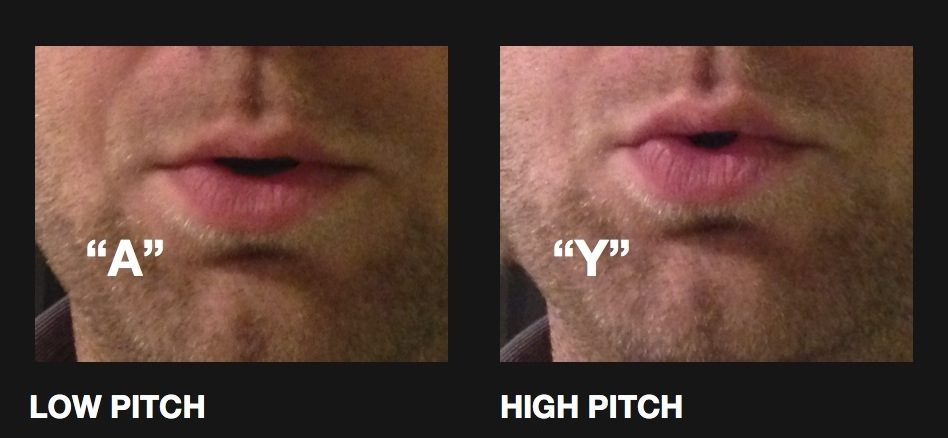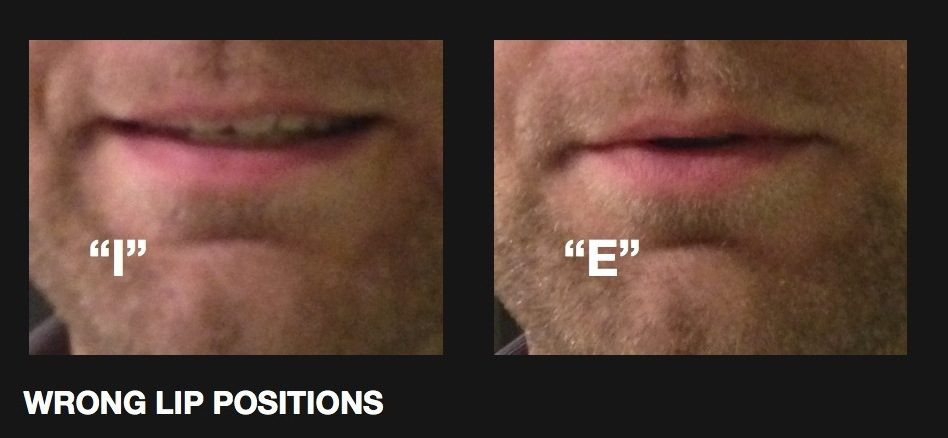Using vowels to improve and optimize your trombone embouchure
I have written a lot about about air flow and keeping the throat wide open while playing trombone (and other brass instruments). Here is a really cool trick to improve your embouchure and make sure that you get the most out of your efforts. When you get it right, you will probably experience that your playing will be a lot more effortless, both in the high range and low range!
Your lips are not to be compared with a guitar string that produces a higher pitch the more you stretch it!!!! This is a very common mistake, and a dead end for trombone and brass embouchure. When you get it right, you will be amazed how little effort is actually needed, regardless of the range you are playing in.
The right vowels for trombone playing
I have found that the vowels A (as in Argentina) and Y (as in ypsilon) work best for a good trombone embouchure.
The vowel A is great for low and mid range, amking sure that the air flowing freely and helping you to achieve an open throat. Also note the tongue position while saying “Aaa”! You’re tongue is laying flat in the bottom of your mouth, right?
The vowel Y is great for mid/high range, making your mouth slightly narrower. Please note that your tongue is now quite high up in the mouth, helping to shape and sharpen the air flow. See the pic below for correct use of vowels for trombone playing.

I have seen (and heard) far too many players using the vowels E (as in enter) and I (as in interaction), with a very bad result, especially when playing in the high range. The sound of the instrument will be flat and without overtones, and there will be a very strict limit for how high a player can play. Getting beyond these limits using the vowels E or I, is like trying to get your lips through a brick wall. Quite hard and painful with other words. Are you one of these players? Take a look in a mirror while working your way up in the high range, starting on a comfortable Bb. If your mouth gets wider as the pitch gets higher, you are in trouble!

I hope you find this trombone lesson helpful, and please leave a comment and let me know how it works out for you!
PS. Did you find Digitaltrombone on Facebook? The best way to stay tuned and catch the latest new on the site!
4 Comments
-
Really good advice. I will work on this. One thing that helps me is making a trough with my tongue. Sides up on teeth and the trough gives a place for the air to go.
Jack
-
Very Nice advices thank you.
I would like also to point out a linguistic problem.The position taken by the lips, tongue and hole mouth by pronouncing lettres as A, Y, I or Tu,Du, Ku etc highly depends on the native language of each one of us…Germans Greeks Chinese place differently their mouth tongue and lips in order to pronounce a letter. I personnaly had this problem for many years until I found my own “native” letters to pronounce. For exemple the tomguing Du Du Du in order to do legato for me turns to Ro Ro Ro in Greek (I’m Greek actually) -
Thanks for your input, Papatrobonis, most useful. I agree that native language can affect the way people pronounce vowels, but I believe this to be a good starting point. Hopefully, the readers will do some experimenting and find the most effective solution for them.
All the best,
Anders -
There seems to be an improvement, but as I have just started, I will let you know after a month or so how things are going. John Codd.


